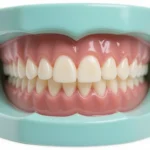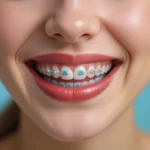Dental bridge Cost Pontics are used to replace missing teeth by bridging the gap with false ones (pontics). A bridge consists of caps placed over filed-down natural teeth on either side and false teeth (pontics) placed between.
These anchor teeth, known as abutment teeth, must be healthy and strong enough to support the bridge without breaking. Otherwise, their structure could collapse.
What is a Dental Bridge?
Dental bridge Cost Pontics are an effective solution to replace missing teeth. Comprised of an artificial pontic that connects by metal connectors to two healthy adjacent teeth (known as abutment teeth), bridges fill in gaps left by missing ones, making chewing and speaking easier, while helping prevent their subsequent shifting and shifting leading to bite problems or jaw bone deterioration.
Bridges provide a permanent solution to missing teeth, and should be cared for like natural ones. However, they require certain maintenance tasks in order to stay strong and healthy – such as regularly brushing and flossing your bridge to avoid gum disease, decay, or any other potential issues; additionally you should visit your dentist regularly for cleanings and checkups.
There are various types of dental bridge Cost Pontics each offering different advantages and drawbacks. Your dentist will discuss all the available choices with you and help determine if a bridge is the best choice for your situation based on factors like where the missing tooth lies, how many are missing altogether, health and lifestyle factors as well as whether or not clenching or grinding occurs; they may also discuss other replacement solutions like implants.
How Does a Dental Bridge Work?
Missing teeth can create numerous issues for patients, including poor chewing, tooth decay and gum disease. Dental bridge Cost Pontics provide a quick and painless solution, helping restore your natural smile by filling any gaps caused by missing teeth. You should usually only need two trips to the dentist; one for taking moulds of your teeth and one to place crowns – although you might experience some discomfort once the anesthetic wears off; over-the-counter painkillers should provide relief.
“According to TechTarget, before your bridge can be fitted, the anchor teeth (known as abutment teeth) on either side of the gap must be filed down. While this can cause some discomfort, this step is essential to ensure the anchors are strong enough to support its weight.”
Once the abutment teeth have been prepared, a bridge can be secured using dental cement. Its crowns typically consist of porcelain that can be painted to complement your natural tooth colors.
Your bridge should be cared for similarly to natural teeth to ensure it remains healthy, such as brushing with fluoride toothpaste, flossing regularly and visiting a dentist or dental practitioner on a regular basis. Furthermore, it’s essential that any undue pressure be put off on its abutment teeth as this could cause them to deteriorate and break over time.
What Types of Dental Bridges Are Available?
Dental bridges are an enduringly popular solution when it comes to replacing missing teeth, providing both cost-efficiency and accessibility for both dentists and their patients alike. When considering whether a bridge is right for you, speaking to a dependable dentist and exploring all available options should be done prior to making a decision.
There are four primary types of dental bridge Cost Pontics traditional, cantilever, Maryland and implant-supported. Each has their own set of advantages and disadvantages that should be discussed with your dentist before selecting an ideal bridge option based on both where your missing tooth(s) lie as well as budget considerations.
Traditional dental bridge are constructed of porcelain bonded to precious metal and designed to replace single teeth or small sections of them. They tend to be the most cost-effective and can usually be installed quickly during one dental visit; however, they require reshaping your natural teeth in order to support and prevent damaging other adjacent teeth.
Cantilever dental bridges are similar to traditional dental bridge Cost Ponticsexcept they can replace multiple missing teeth at once. While they’re more affordable than their traditional counterparts, cantilever bridges don’t provide as much stability. Resin-bonded bridges may be less costly alternative; however, as they don’t require as much shaping of natural teeth. But traditional and cantilever dental bridges might last longer.
What is the Cost of a Dental Bridge?
Costing of dental bridges depends on a number of variables. Type, materials used and any additional treatments required will all affect its price; dental insurance plans often cover these restorations.
No matter the type of bridge you select, this treatment can restore both oral health and aesthetic appearance. With today’s advanced cosmetic dentistry techniques, bridges can look so natural that only your dentist will know it is not a healthy tooth!
Dental bridges not only replace missing teeth, but can also prevent their neighboring ones from shifting into empty gaps that result in decay and misalignment of adjacent teeth. If left untreated, gaps can lead to other issues including decay and misalignment of adjacent teeth as well as degradation of bone integrity – although a bridge does not eliminate this risk altogether, but will significantly decrease it with proper oral hygiene and regular visits to a cosmetic dentist.
Traditional bridges usually comprise two crowns connected by an artificial tooth (pontic), so its cost will depend on how many of those teeth you need. Location, materials used and material quality also have an effect, with high-grade porcelain and zirconia typically more costly than metal alloys; more complicated bridges may also incur greater labor expenses which increases overall costs
Read also: Factors That Impact Dental Bridge Cost













